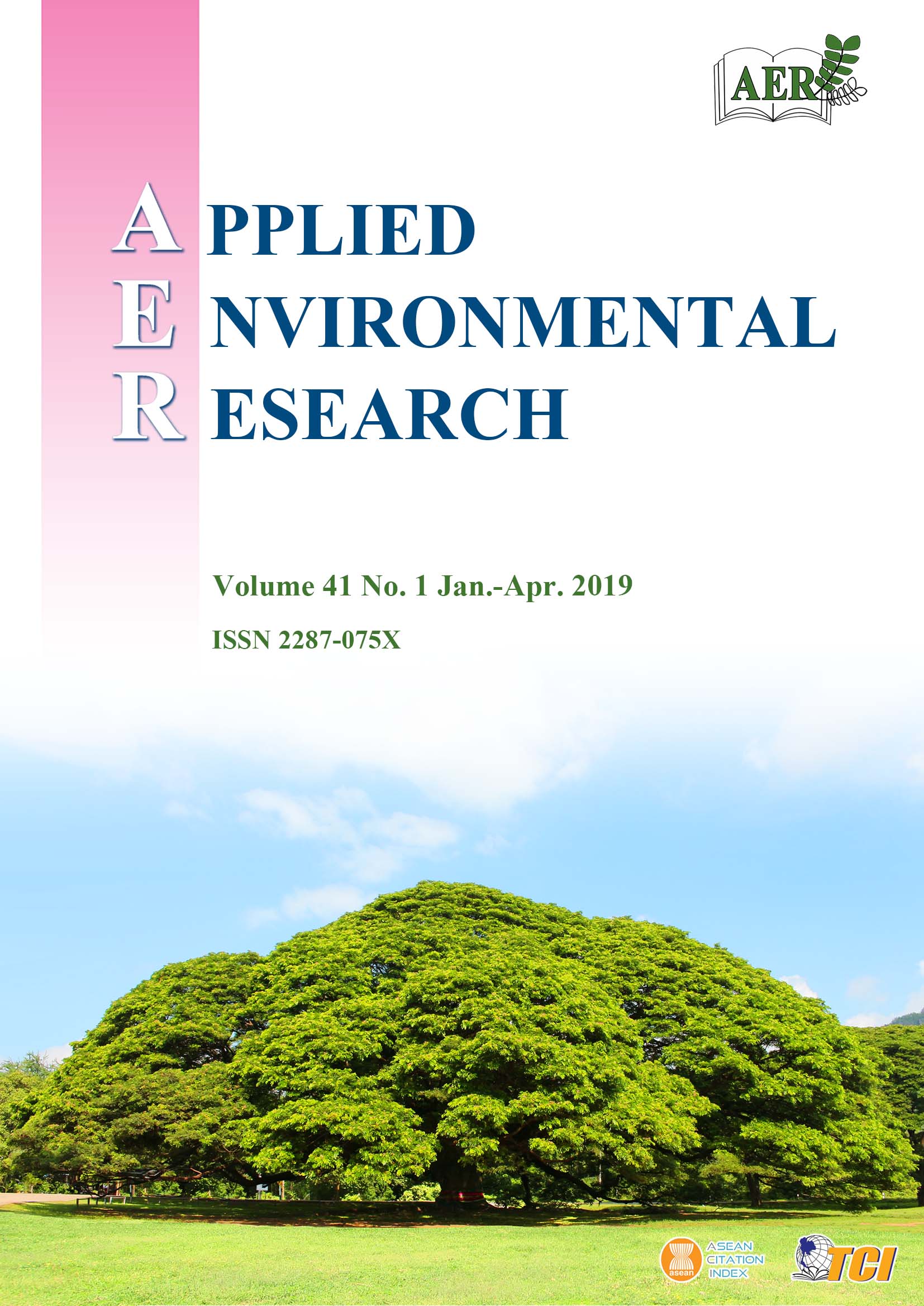Reduction of GHG Emissions Using Zeolite 4A under Different Fertilizer Usages in Rice Cultivation
Main Article Content
Abstract
This investigation examined the potential of zeolite 4A to reduce emission of greenhouse gases (GHGs) in rice cultivation under different fertilizer regimes. A completely randomized design was used with four treatments (different fertilizer application method) and 2 blocks (zeolite 4A application, using rice variety RD-41 sown at a seed rate of 15.625 g m-2, and harvested in 105 d in Lam Ta Khong Research Station, Nakhon Ratchasima. The experimental results demonstrated that significant reduction in GHG emissions in zeolite 4A treated plots, either alone or in combination with chemical fertilizers, with GHG reduction of 43.27 % and 34.69 %, respectively. It was concluded that zeolite 4A has potential to reduce GHG emissions in rice cultivation, and that effect may be dose-dependent.
Article Details

This work is licensed under a Creative Commons Attribution-NonCommercial 4.0 International License.
Published articles are under the copyright of the Applied Environmental Research effective when the article is accepted for publication thus granting Applied Environmental Research all rights for the work so that both parties may be protected from the consequences of unauthorized use. Partially or totally publication of an article elsewhere is possible only after the consent from the editors.

